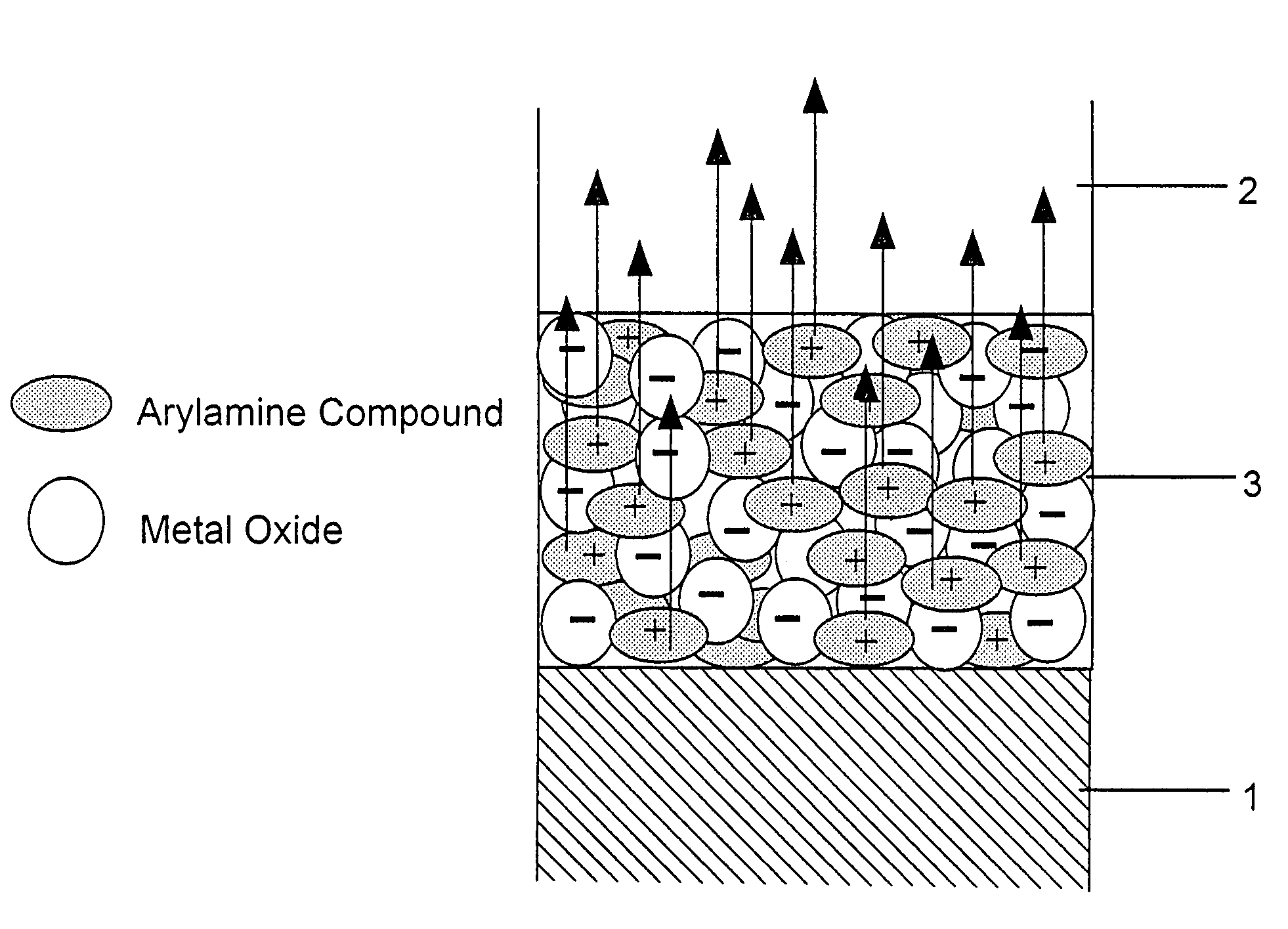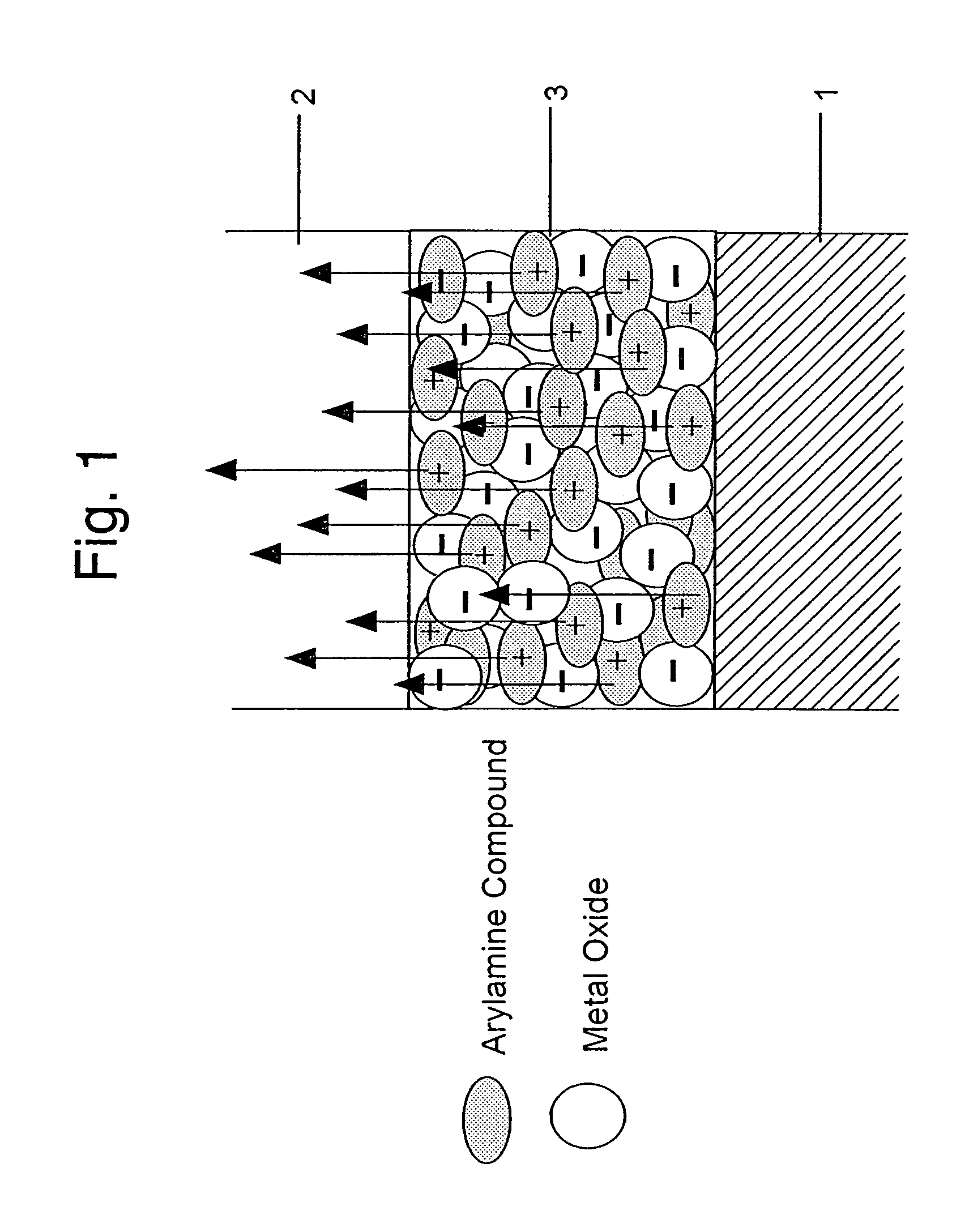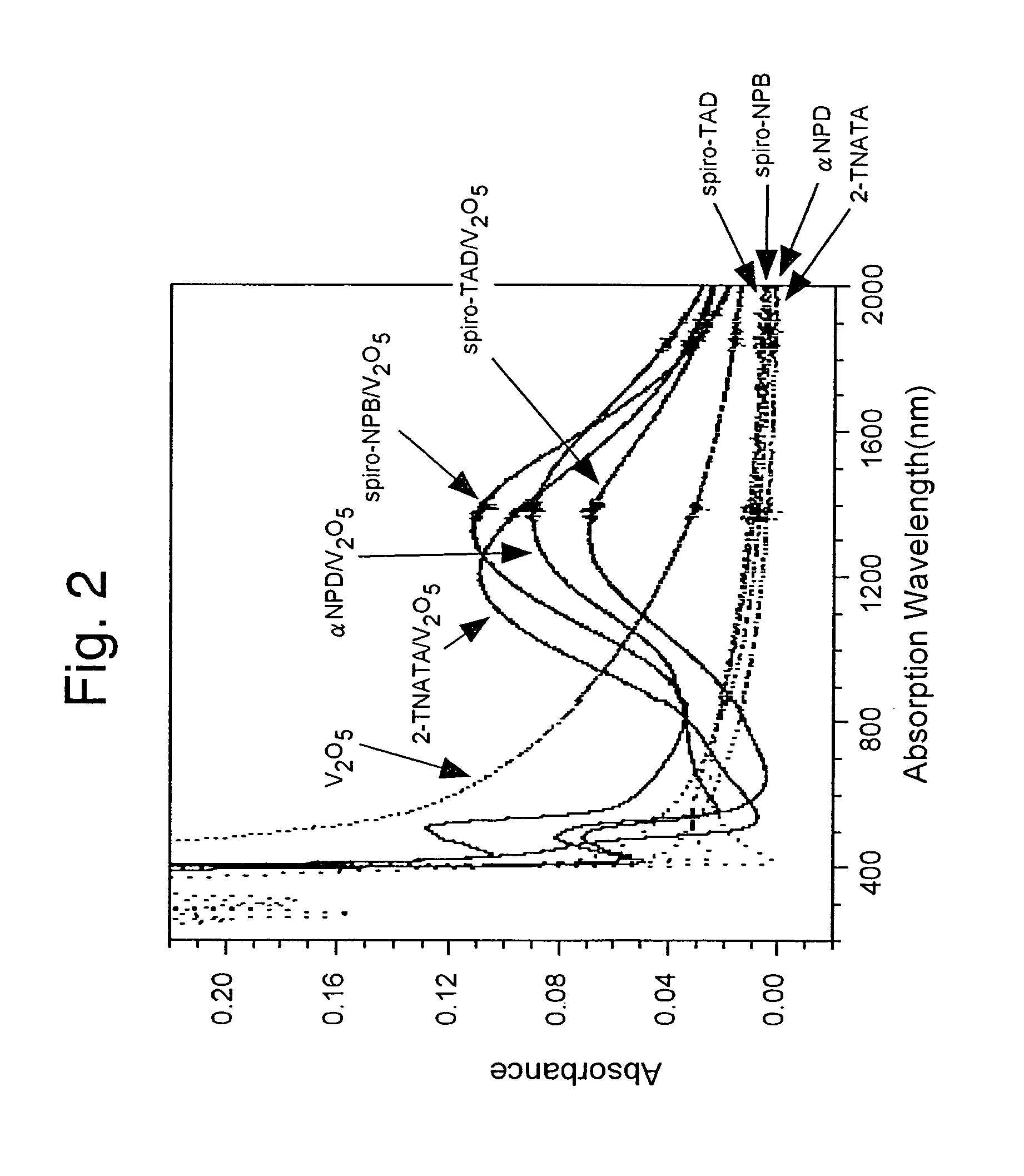Organic electroluminescent device
a technology of electroluminescent devices and organic materials, which is applied in the direction of discharge tubes/lamp details, luminescent compositions, discharge tubes/lamp details, etc., can solve the problems of inability to change the design (including the thickness of the layer) of the electroluminescent device unlimitedly, poor adhesion of magnesium to the surface of organic materials, and inability to oxidize and stable magnesium. , to achieve the effect of reducing the energy barrier, low voltag
- Summary
- Abstract
- Description
- Claims
- Application Information
AI Technical Summary
Benefits of technology
Problems solved by technology
Method used
Image
Examples
example 1
[0095]In this example, the organic EL device having the lamination structure of FIG. 5 is fabricated.
[0096]A glass substrate 21 is coated thereon with an ITO (indium-tin oxide; Nippon Sheet Glass Co., Ltd.) having a sheet resistance of about 10Ω / □ as a transparent anode electrode layer (anode electrode layer) 22. A metal oxide, V2O5, and an organic compound having a hole transporting property, α-NPD, are co-deposited at a molar ratio of V2O5:α-NPD of about 4:1 on the ITO-coated glass substrate 21 to form a mixed layer 27 having a thickness of about 100 Å acting as a hole injection layer.
[0097]Thereafter, a hole transportation layer (α-NPD) 23, a light-emissive layer (Alq) 24, an electron injection layer (metal doping layer, low resistance electron transportation layer) 25 and a cathode electrode layer (cathode) 26 are sequentially laminated as in the production of the EL device of the above-described Reference Example. Note that an organic structure 28 including a light-emissive lay...
example 2
[0099]In this example, the organic EL device having the lamination structure of FIG. 6 is fabricated.
[0100]A glass substrate 31 is coated thereon with an ITO (indium-tin oxide; Nippon Sheet Glass Co., Ltd.) having a sheet resistance of about 10Ω / □ as a transparent anode electrode layer 32. A metal oxide, V2O5, and an organic compound having a hole transporting property, α-NPD, are co-deposited at a molar ratio of about 4:1 on the ITO-coated glass substrate 31 to form a mixed layer 37 having a thickness of about 1,000 Å acting as a hole injection layer of the present invention.
[0101]Thereafter, a hole transportation layer (α-NPD) 33, a light-emissive layer (Alq) 34, an electron injection layer (metal doping layer) 35 and a cathode electrode layer 36 are sequentially laminated as in the fabrication of the EL device of the above-described Reference Example. Note that an organic structure 38 including a light-emissive layer is formed from the hole transportation layer 33, the light-emis...
example 3
[0107]In this example, the organic EL device having the top emission structure of FIG. 12 is fabricated. An aluminum (Al; work function of about 4.2 eV) is deposited at the deposition rate of about 10 Å / sec under the pressure of about 10−6 Torr (1 Torr=133.32 Pa) (hereinafter, all deposition process is conducted under the same condition) on a glass substrate 41 to form an anode electrode layer 42 having a thickness of about 1,000 Å. A metal oxide, V2O5, and an organic compound having a hole transporting property, α-NPD, are co-deposited at a molar ratio of about 4:1 on an anode electrode layer 42 to form a mixed layer 47 having a thickness of about 100 Å acting as a hole injection layer of the present invention. Thereafter, α-NPD is deposited at the deposition rate of about 2 Å / sec on the hole injection layer 47 to form a hole transporting layer 43 having a thickness of about 600 Å. Subsequently, Alq is deposited on the hole transportation layer 43 under the same vapor deposition co...
PUM
| Property | Measurement | Unit |
|---|---|---|
| thickness | aaaaa | aaaaa |
| ionization potential | aaaaa | aaaaa |
| glass transition temperature | aaaaa | aaaaa |
Abstract
Description
Claims
Application Information
 Login to View More
Login to View More - R&D
- Intellectual Property
- Life Sciences
- Materials
- Tech Scout
- Unparalleled Data Quality
- Higher Quality Content
- 60% Fewer Hallucinations
Browse by: Latest US Patents, China's latest patents, Technical Efficacy Thesaurus, Application Domain, Technology Topic, Popular Technical Reports.
© 2025 PatSnap. All rights reserved.Legal|Privacy policy|Modern Slavery Act Transparency Statement|Sitemap|About US| Contact US: help@patsnap.com



